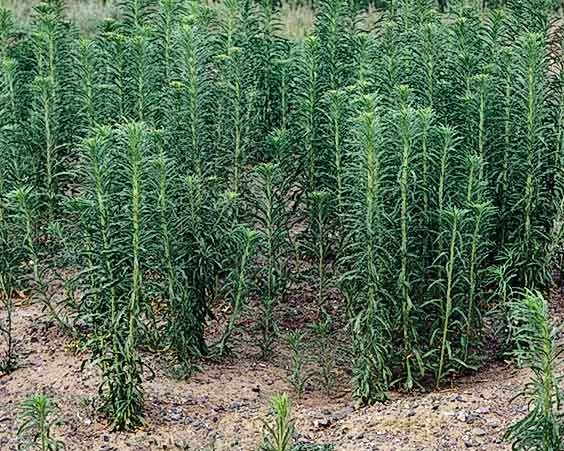Saving Glyphosate

Resistance–the inherited ability of a plant to survive and produce healthy seed after being sprayed with enough material to kill non-resistant plants of the same species–has developed to glyphosate in several weeds in California. These include rigid ryegrass, annual ryegrass, marestail (Horseweed), Hairy fleabane, and jungle rice. Glyphosate resistance is a gradual process—a sort of “resistance creep”—compared to the sudden resistance that can appear in certain crop/herbicide situations (think Londax® in rice production). Reducing the chance of glyphosate resistance developing in other weed species is the topic of this article. The following are key points to effective glyphosate use in non-cultivated orchards.
Get the best weed control possible when using glyphosate. This means optimum spray solution pH, chemistry and glyphosate concentration. Here’s what you want in the tank:
- Spray solution pH = 4-6. If spray water is pH≥7, add acidify/buffer first.
- Spray solution hardness
- A solid rate of non-ionic surfactant adjuvant to improve leaf penetration if not included in glyphosate product formulation. Check the label to see what adjuvants can be added to the tank.
- High label rate of glyphosate to kill weeds that are slipping towards resistance. Skimping on glyphosate rate, even if it looks like it works, invites resistance creep. With the low price of glyphosate, don’t risk resistance, use a full rate.
- Tank mix glyphosate with postemergent herbicides that can control glyphosate resistant weeds. Possible options–depending labeling for the specific tree/vine crop—include Treevix™, Rely 280®, Gramoxone®, Shark® and Venue®. Consult with your PCA for registration status, materials, and rates.
- Careful! Keep glyphosate sprays away from your crop. Avoid drifting glyphosate onto crop leaves or spraying sensitive bark of young trees. Lower spray pressure and boxed/painted young trees are keys to crop-safe glyphosate use.
Spray glyphosate at the right time. Spray weeds early and when they are not stressed. Don’t let weeds go to seed, or even form flowers/release pollen. Smaller weeds are easier to kill than more mature plants of the same species. Dry and dusty weeds are less sensitive to glyphosate than unstressed weeds.
Consider using pre-emergent herbicides to control a broad spectrum of weeds, including those with or creeping towards glyphosate resistance. Effective new products—Alion, Pindar GT, Matrix, Chateau and others—give growers and PCAs many tools for pre-emergent weed control. For best results, these materials generally require rain or irrigation water to move them into the soil and a clean soil surface when applied. If the pre-emergent herbicide you are using has no post emergent activity and the glyphosate resistant weed that you are trying to control has already germinated, combining the pre-emergent with glyphosate will most likely not be effective – for example glyphosate plus surflan on 3 inch tall resistant ryegrass. In this case, include an herbicide in the tank that is effective on the glyphosate resistant weed in the field.
Check, then control, then check control. Walk the field to see what weeds are present before spraying, match herbicide to the weeds present, and check control after spraying. How did you do? See any weeds “coming through” your glyphosate spray? If you do, work with your PCA to add products or practices to control those uncontrolled weeds. Hand weeding a few rogue weeds before they go to seed might save you a lot of trouble.
*************
Get help:
- identifying your weeds
- check their susceptibility to herbicides
on the Weed Research and Information Center website: (http://wric.ucdavis.edu).
**************
Doesn’t all this cost extra? YES. Glyphosate resistance management costs extra, but it costs less than farming without effective glyphosate.
Original source CROP CURRENTS Nov. 2013 newsletter